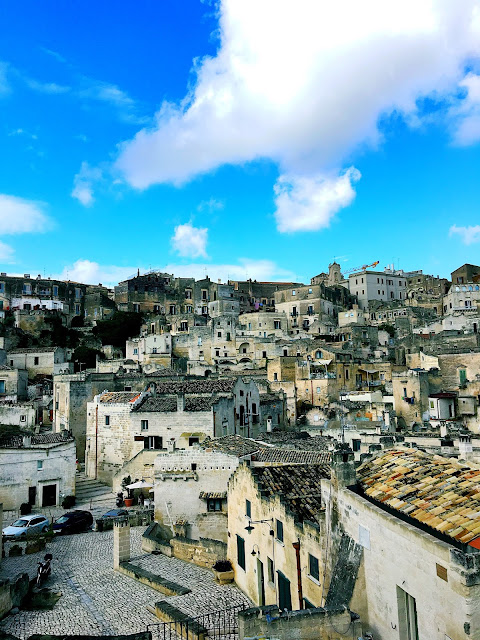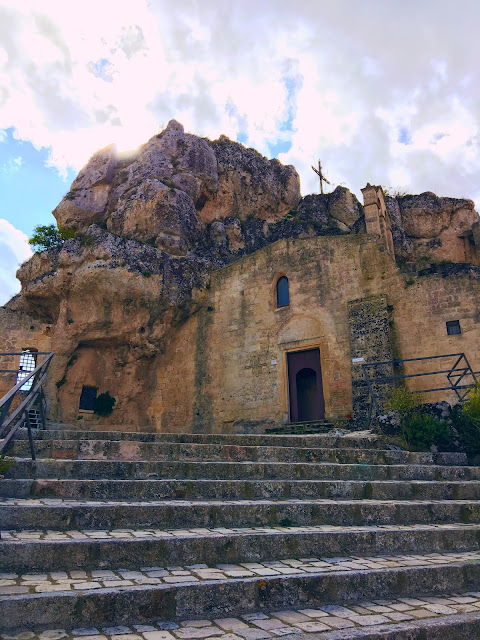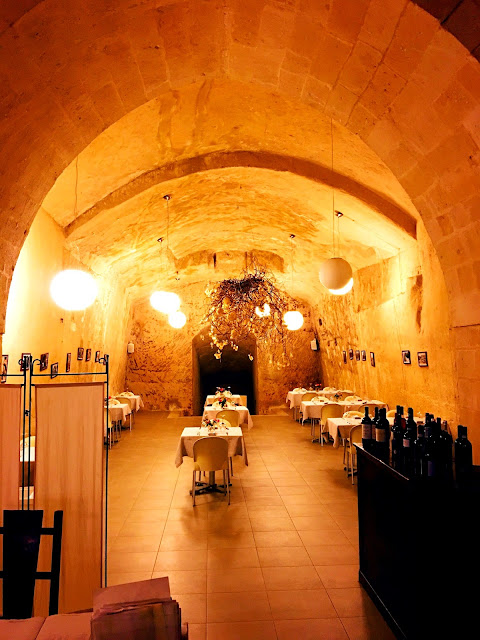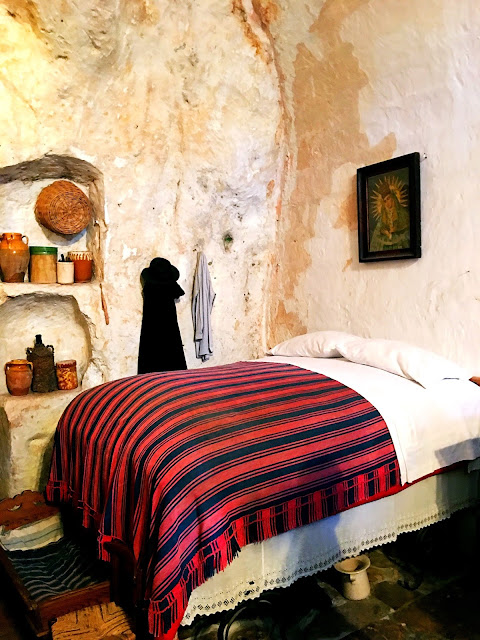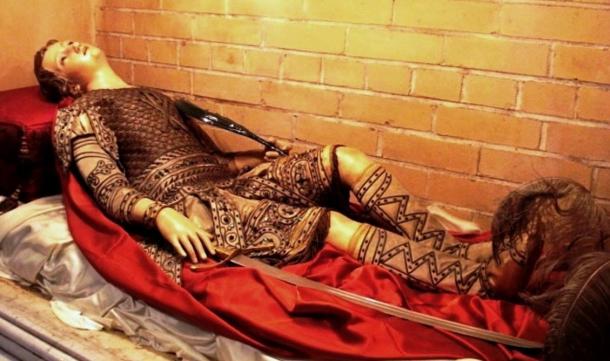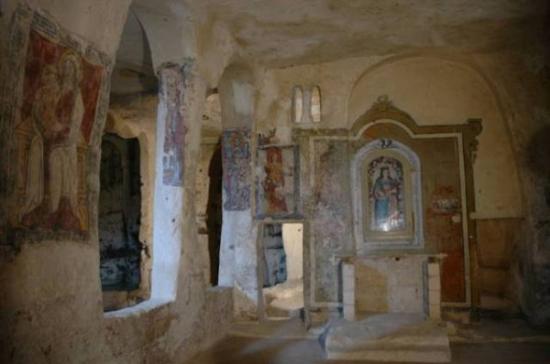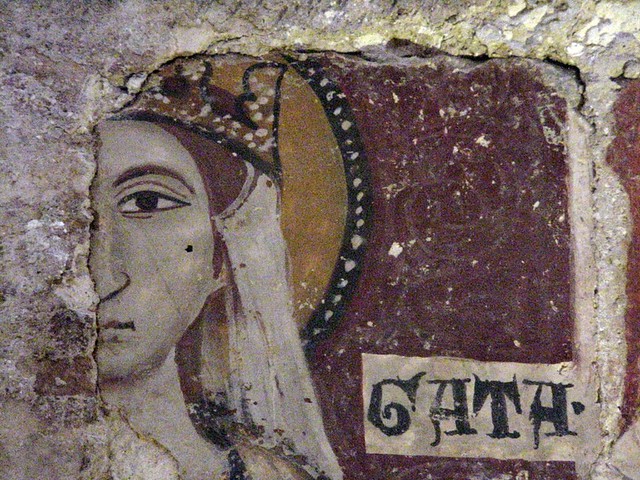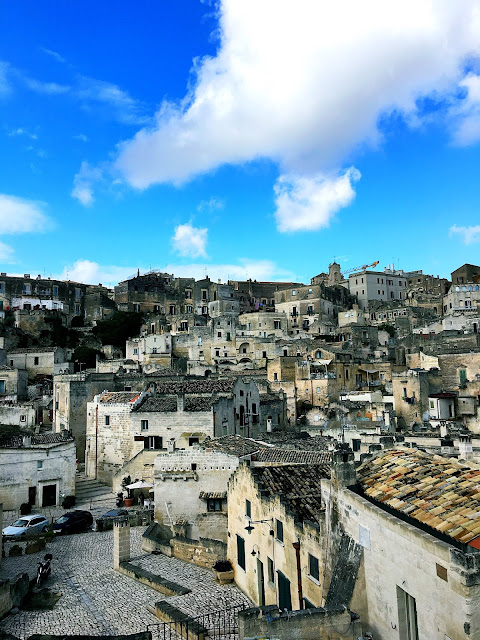This past September I took my Glam Italia tour to one of the best places I have ever been. Deep in the heart of Italy's south, in the region of Basilicata there lies one of the three oldest and most continuously inhabited cities in the world, Matera.
Matera has been populated since paleolithic times.
Matera needs to be on your bucket list, and while there you absolutely MUST do these 11 things:
1. Walk
In order to understand this amazing city you need to walk. And walk and walk. Up and down and around the rabbit warren that is the Sassi.
When you walk the Sassi you will discover that it is an optical illusion - it's actually quite disorienting! Things look far away, but in fact they are quite close, it's just that the Sassi is so vertical
When you walk the Sassi you will discover that it is an optical illusion - it's actually quite disorienting! Things look far away, but in fact they are quite close, it's just that the Sassi is so vertical
You can't come all the way to Matera and not take a guided tour of the Sassi. On the Glam Italia Tours I use Antonio Manicone from Matera Tour Guide. Antonio is the top rated tour guide on Tripadvisor, and with good reason. He is fantastic! I use him for my Glam Tours and I sincerely recommend you use him too.
No guide book can give you the insight into Sassi life that a guide will give you. Antonio's grandparents lived in the Sassi until they were relocated by the government to the apartments on the other side of Matera. His stories about their life in the Sassi and the social fabric of the community brought an entirely different experience to the tour.
Without a tour it would be incredibly difficult to understand the structure of the homes, and the brilliance of the design of the communities.
The Rupestrian cave churches of Matera are sensational, both for their design and for the spectacular frescos inside. In a country overflowing with church art, these take you to an entirely different place. The art is largely Byzantine in style even though much of it was painted in the Middle Ages. The frescos in Santa Maria di Idris and in
will take your breath away
4. Stay in a cave hotel
Staying in a cave hotel was such a fabulous experience! We stayed at the beautiful Le Dodici Lune where the ceilings are high, the decor is beautiful and the service is wonderful.
 |
| sitting room area inside our cave hotel in Matera |
Hotel specialist Alex Polizzi says that you should always know where you are when you wake in a hotel. Most hotels are very much alike and sitting inside that room you could be anywhere. When you wake in a cave hotel in Matera you know exactly where you are. And it's magical.
Le Dodice Lune has a world class restaurant on the property, in yet another giant cave. The visual is fantastic, second only to the food itself. Local cuisine is fresh and flavorful, and really just sensational!
Pair it with local wines from the Basilicata for the most perfect experience ever
 |
| The staircase down to the wine cellar at Le Dodici Lune in Matera |
Pair it with local wines from the Basilicata for the most perfect experience ever
The Sassi is spectacular at night. Take time to stroll through the labyrinth streets after sundown. The city shimmers like a jewelry box, and it's beautiful!
In the 17th century a man of the cloth wrote that every evening it was customary for every home to put a candle in the window. With so many doors and windows it would look like a sea of light reflected in the stars above. Dalle sassi alle stelle / from the stones to the stars
From the Sassi you can walk down the gorge and cross a bridge to the other side. There are caves to explore, an unobstructed view of the Sassi, and incredible views of the countryside.
The cave house of Vico solitaire in Sasso Caveoso gives you insight into the life of the average family living in the Sassi. This cave home housed a family of 11 and their animals. See how the cave was set up as a home, where the kitchen was, where everyone slept, where the animals lived - it's fascinating!
9. Visit the crypt of the original sin
This is one of the best things I have ever done.


Outside of Matera in the middle of nowhere, along the wall of the Gravina di Picciano gorge you will find the Crypt Of The Original Sin, a heavily frescoed cave church that was abandoned in the late 9th century, became overgrown with moss, as was used for centuries as a shelter for shepherds.
Rediscovered in 1963 this cave church holds a fresco cycle that comprise one of the most important examples of early medieval painting in the Mediterranean. The painter is unknown, simply referred to as the flower painter of Matera, but his work is hauntingly beautiful.

The apses depict saints, and the entire back wall tells the story of Genesis.
Rediscovered in 1963 this cave church holds a fresco cycle that comprise one of the most important examples of early medieval painting in the Mediterranean. The painter is unknown, simply referred to as the flower painter of Matera, but his work is hauntingly beautiful.
The apses depict saints, and the entire back wall tells the story of Genesis.
If you are someone to whom art speaks, you will understand me when I tell you that when they slowly raised the light on these paintings I had tears rolling down my cheeks.
Photography is forbidden, so images have been sourced from Google. I will be writing a separate post about the crypt.
10. Explore the art galleries
Matera is a delectably artsy town, and is full of cafes, restaurants and little art shops and galleries. It has been named the European Capital of Culture for 2019. When planning your trip to Matera factor in an afternoon for aimless strolling and wander into as many local haunts as you can.
11. Visit The Palombaro Lungo
One of the things I found incredibly fascinating from Antonio's tours is the Palombaro Lungo, the largest of the sassi' incredibly clever cisterns dug to capture what rain water the area got. An intricate system of tunnels, caves and water channels captured rain water to be drinking water for the locals. Eels kept the water moving so that it didn't become stagnant and lime kept it safe to drink.




